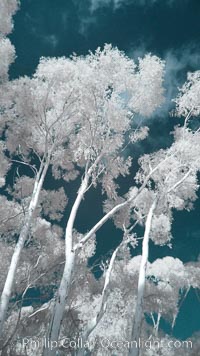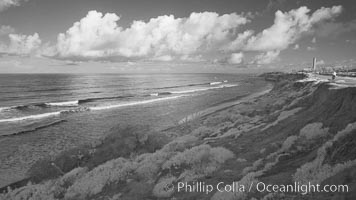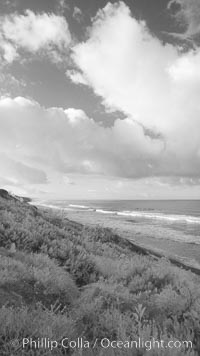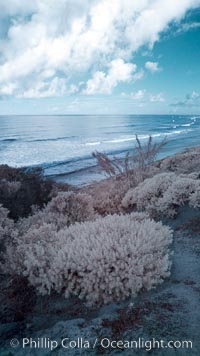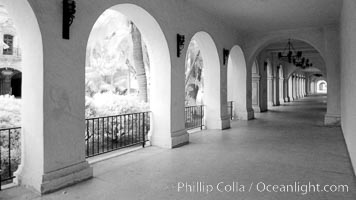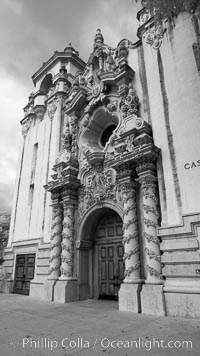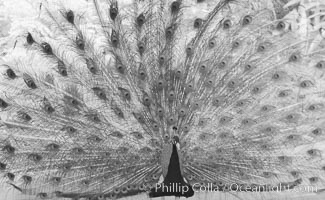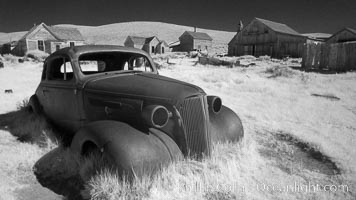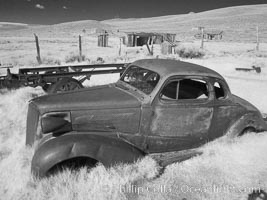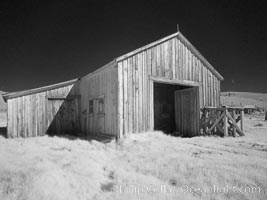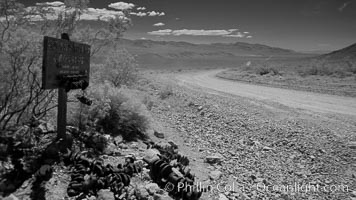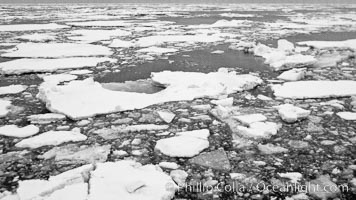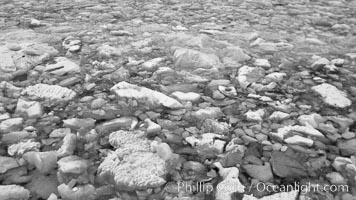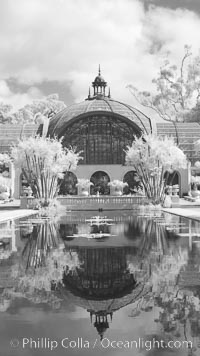
The Botanical Building in Balboa Park, San Diego. The Botanical Building, at 250 feet long by 75 feet wide and 60 feet tall, was the largest wood lath structure in the world when it was built in 1915 for the Panama-California Exposition. The Botanical Building, located on the Prado, west of the Museum of Art, contains about 2,100 permanent tropical plants along with changing seasonal flowers. The Lily Pond, just south of the Botanical Building, is an eloquent example of the use of reflecting pools to enhance architecture. The 193 by 43 foot pond and smaller companion pool were originally referred to as Las Lagunas de las Flores (The Lakes of the Flowers) and were designed as aquatic gardens. The pools contain exotic water lilies and lotus which bloom spring through fall.
Location: Balboa Park, San Diego, California
Image ID: 23098
Location: Balboa Park, San Diego, California
Image ID: 23098
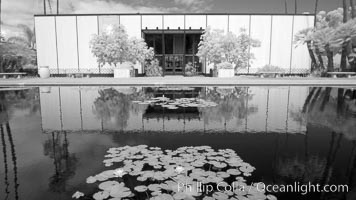
Tinken Museum of Art, reflected in lily pond, infrared.
Location: Balboa Park, San Diego, California
Image ID: 23100
Location: Balboa Park, San Diego, California
Image ID: 23100
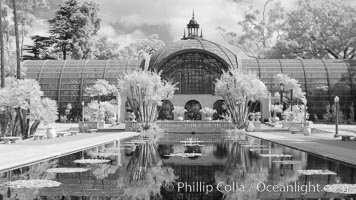
The Botanical Building in Balboa Park, San Diego. The Botanical Building, at 250 feet long by 75 feet wide and 60 feet tall, was the largest wood lath structure in the world when it was built in 1915 for the Panama-California Exposition. The Botanical Building, located on the Prado, west of the Museum of Art, contains about 2,100 permanent tropical plants along with changing seasonal flowers. The Lily Pond, just south of the Botanical Building, is an eloquent example of the use of reflecting pools to enhance architecture. The 193 by 43 foot pond and smaller companion pool were originally referred to as Las Lagunas de las Flores (The Lakes of the Flowers) and were designed as aquatic gardens. The pools contain exotic water lilies and lotus which bloom spring through fall.
Location: Balboa Park, San Diego, California
Image ID: 23103
Location: Balboa Park, San Diego, California
Image ID: 23103
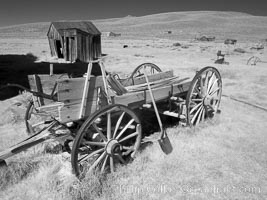
Wagon near Miner's Union Hall, infrared.
Location: Bodie State Historical Park, California
Image ID: 23113
Location: Bodie State Historical Park, California
Image ID: 23113
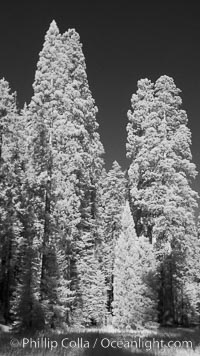
Giant sequoia tree towers over surrounding trees in a Sierra forest. Infrared image.
Species: Giant sequoia tree, Sequoiadendron giganteum
Location: Mariposa Grove
Image ID: 23305
Species: Giant sequoia tree, Sequoiadendron giganteum
Location: Mariposa Grove
Image ID: 23305
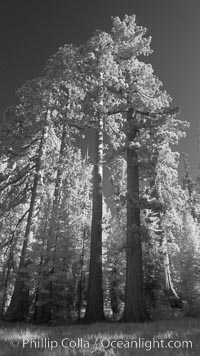
Giant sequoia tree towers over surrounding trees in a Sierra forest. Infrared image.
Species: Giant sequoia tree, Sequoiadendron giganteum
Location: Mariposa Grove
Image ID: 23306
Species: Giant sequoia tree, Sequoiadendron giganteum
Location: Mariposa Grove
Image ID: 23306
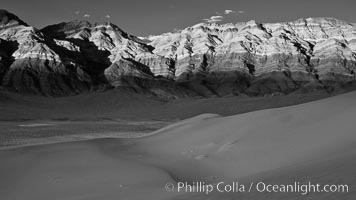
Last Chance Mountains rise above the Eureka Valley.
Location: Eureka Dunes, Death Valley National Park, California
Image ID: 25370
Location: Eureka Dunes, Death Valley National Park, California
Image ID: 25370
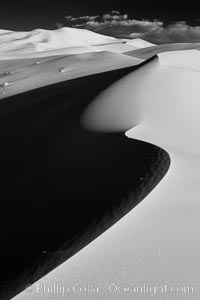
Eureka Sand Dunes, infrared black and white. The Eureka Dunes are California's tallest sand dunes, and one of the tallest in the United States. Rising 680' above the floor of the Eureka Valley, the Eureka sand dunes are home to several endangered species, as well as "singing sand" that makes strange sounds when it shifts.
Location: Eureka Dunes, Death Valley National Park, California
Image ID: 25376
Location: Eureka Dunes, Death Valley National Park, California
Image ID: 25376
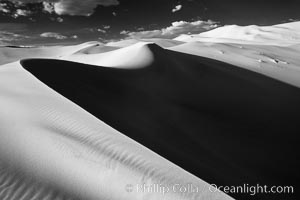
Eureka Sand Dunes, infrared black and white. The Eureka Dunes are California's tallest sand dunes, and one of the tallest in the United States. Rising 680' above the floor of the Eureka Valley, the Eureka sand dunes are home to several endangered species, as well as "singing sand" that makes strange sounds when it shifts.
Location: Eureka Dunes, Death Valley National Park, California
Image ID: 25377
Location: Eureka Dunes, Death Valley National Park, California
Image ID: 25377
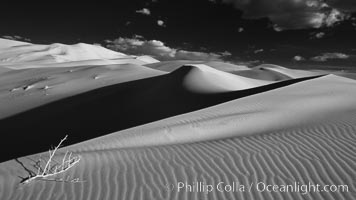
Eureka Sand Dunes, infrared black and white. The Eureka Dunes are California's tallest sand dunes, and one of the tallest in the United States. Rising 680' above the floor of the Eureka Valley, the Eureka sand dunes are home to several endangered species, as well as "singing sand" that makes strange sounds when it shifts.
Location: Eureka Dunes, Death Valley National Park, California
Image ID: 25378
Location: Eureka Dunes, Death Valley National Park, California
Image ID: 25378
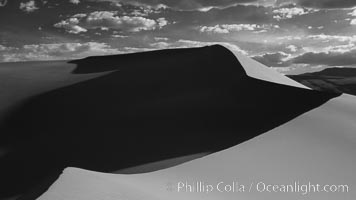
Eureka Sand Dunes, infrared black and white. The Eureka Dunes are California's tallest sand dunes, and one of the tallest in the United States. Rising 680' above the floor of the Eureka Valley, the Eureka sand dunes are home to several endangered species, as well as "singing sand" that makes strange sounds when it shifts.
Location: Eureka Dunes, Death Valley National Park, California
Image ID: 25379
Location: Eureka Dunes, Death Valley National Park, California
Image ID: 25379
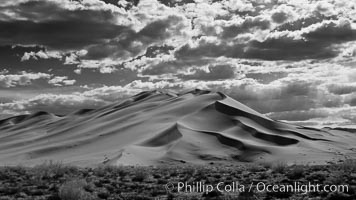
Eureka Dunes. The Eureka Dunes are California's tallest sand dunes, and one of the tallest in the United States. Rising 680' above the floor of the Eureka Valley, the Eureka sand dunes are home to several endangered species, as well as "singing sand" that makes strange sounds when it shifts.
Location: Eureka Dunes, Death Valley National Park, California
Image ID: 25384
Location: Eureka Dunes, Death Valley National Park, California
Image ID: 25384
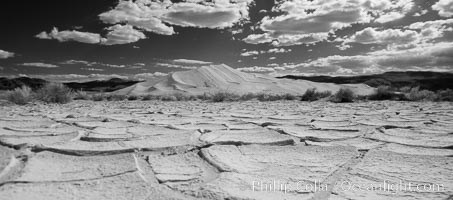
Arid and barren mud flats, dried mud, with the tall Eureka Dunes in the distance.
Location: Eureka Valley, Death Valley National Park, California
Image ID: 25385
Location: Eureka Valley, Death Valley National Park, California
Image ID: 25385
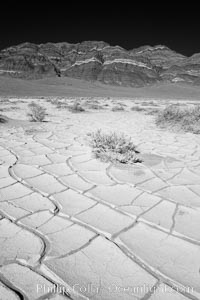
Arid and barren mud flats, dried mud.
Location: Eureka Valley, Death Valley National Park, California
Image ID: 25386
Location: Eureka Valley, Death Valley National Park, California
Image ID: 25386
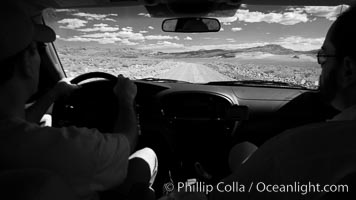
Driving to Eureka Valley.
Location: Eureka Valley, Death Valley National Park, California
Image ID: 25388
Location: Eureka Valley, Death Valley National Park, California
Image ID: 25388
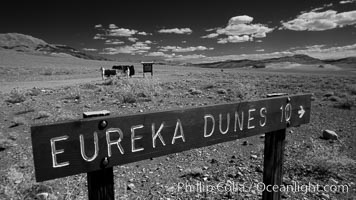
Sign to Eureka Dunes and Eureka Valley.
Location: Eureka Valley, Death Valley National Park, California
Image ID: 25390
Location: Eureka Valley, Death Valley National Park, California
Image ID: 25390
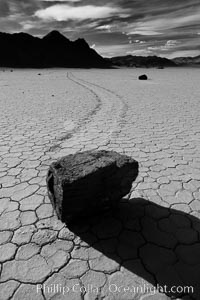
A sliding rock of the Racetrack Playa. The sliding rocks, or sailing stones, move across the mud flats of the Racetrack Playa, leaving trails behind in the mud. The explanation for their movement is not known with certainty, but many believe wind pushes the rocks over wet and perhaps icy mud in winter.
Location: Racetrack Playa, Death Valley National Park, California
Image ID: 25334
Location: Racetrack Playa, Death Valley National Park, California
Image ID: 25334
